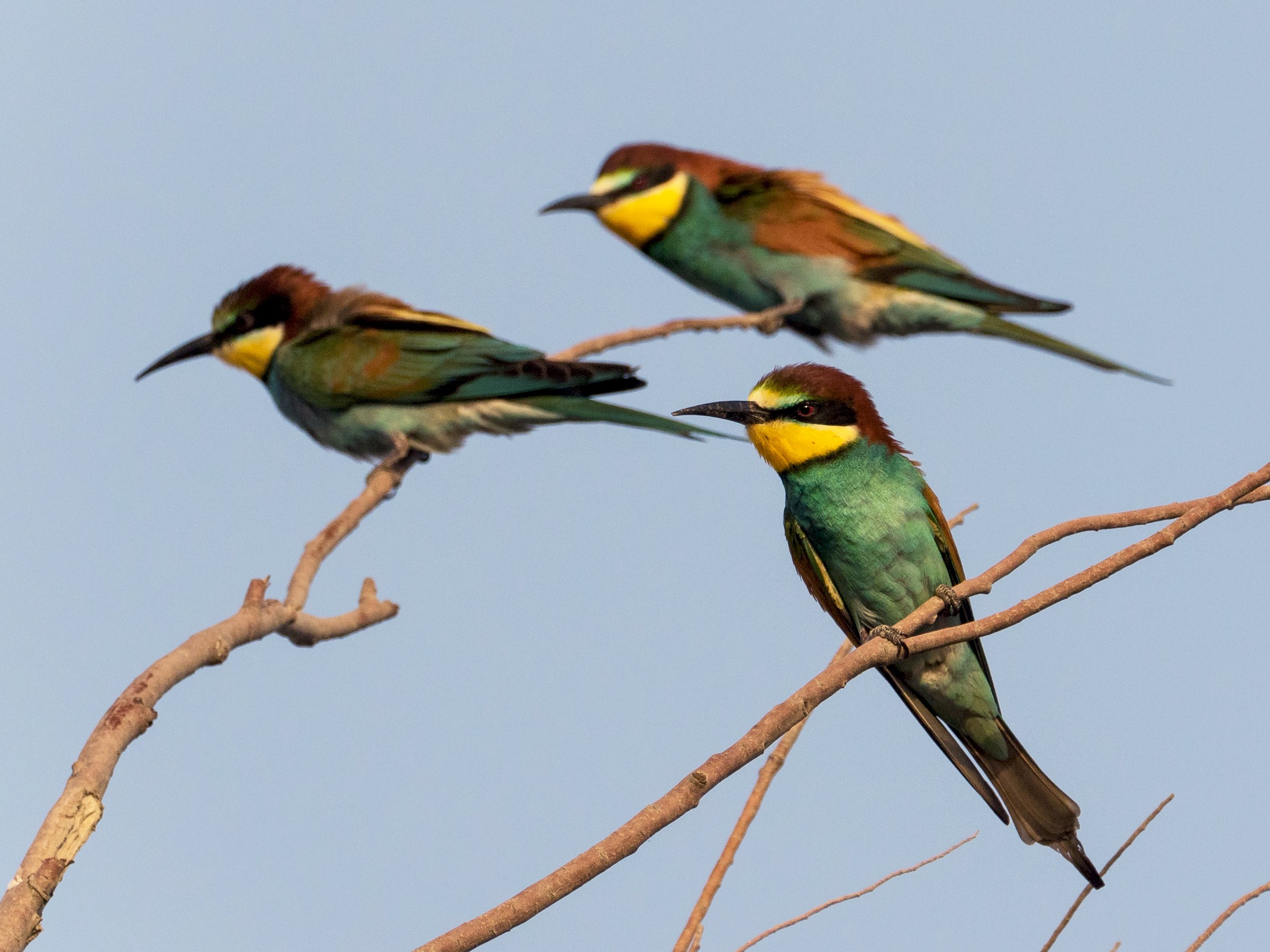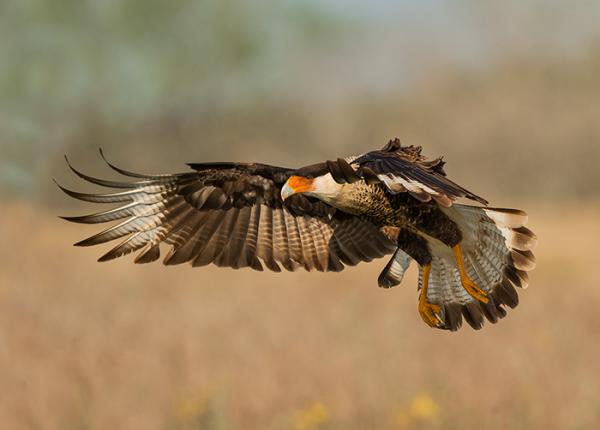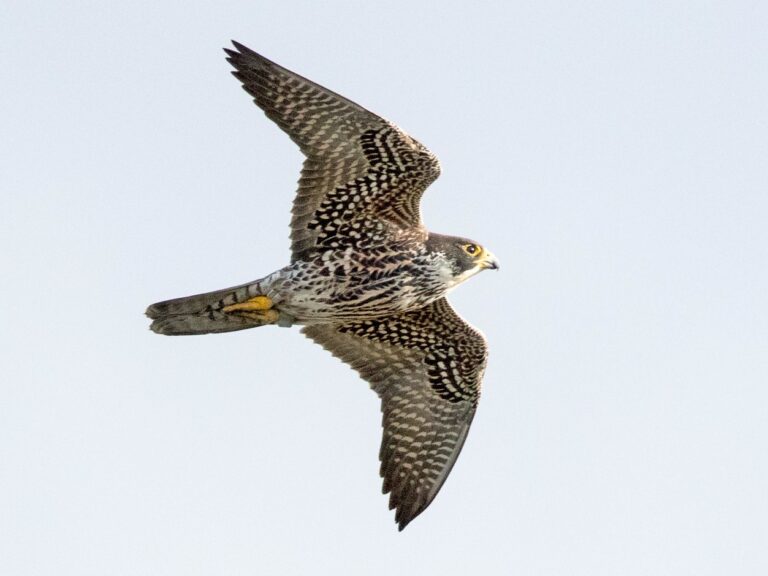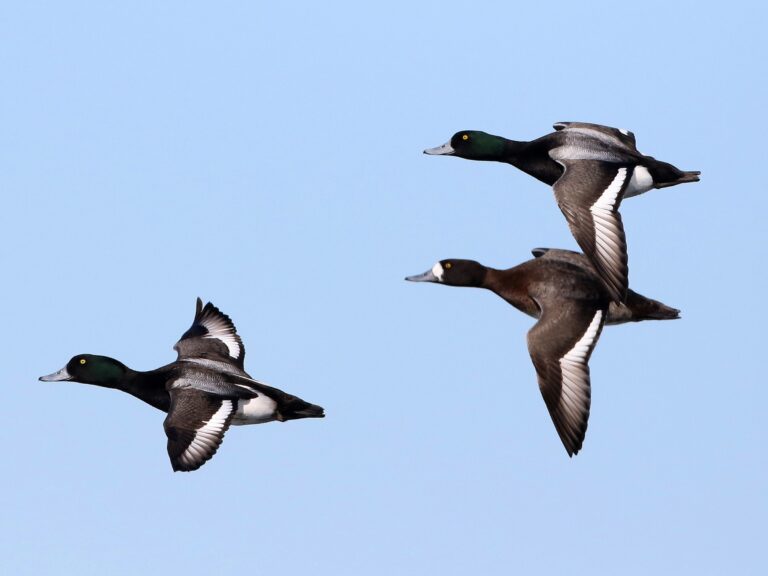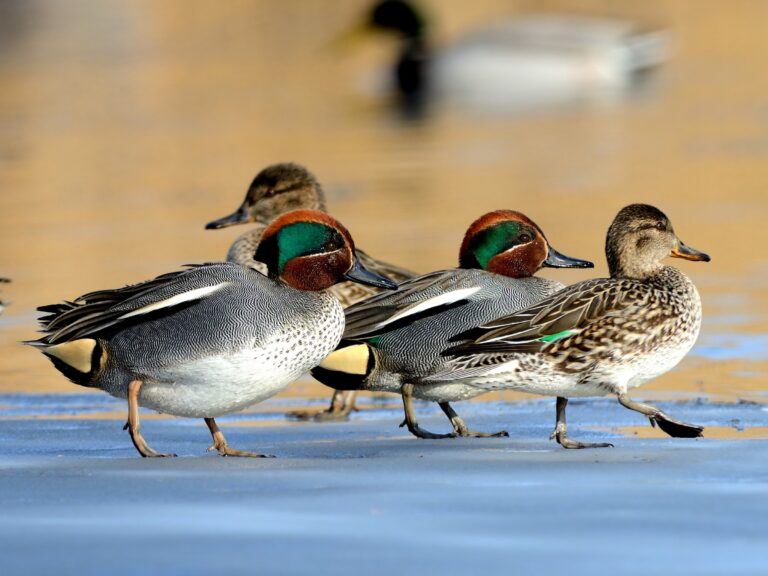European Bee-Eater: Little Known Migration Patterns and Breeding Habits in 2025
Introduction
The European Bee-eater (Merops apiaster) is one of Europe’s most colorful birds. Its bright plumage features a mix of yellow, blue, green, and chestnut tones that make it stand out in any landscape.
These beautiful birds are known for their exceptional hunting skills, catching bees and other flying insects in mid-air with remarkable precision.
These migratory birds breed in southern Europe and parts of northern Africa and western Asia.
During winter, they travel to tropical Africa, covering thousands of miles each year.
European Bee-eaters are social creatures that nest in colonies, often digging tunnels in sandy banks where they raise their young.
Watching a Bee-eater in action is truly a special experience. Before eating a bee, the bird will skillfully remove the stinger by repeatedly hitting and rubbing the insect against a branch.
This clever technique allows them to safely consume what would otherwise be a dangerous meal.
Key Takeaways
- European Bee-eaters have vibrant multicolored plumage and specialized hunting techniques that allow them to safely eat stinging insects.
- These migratory birds breed in southern Europe, parts of Africa and Asia, then travel thousands of miles to tropical Africa for winter.
- Bee-eaters live in social colonies, nesting in tunnels dug into sandy banks and working together to raise their young.
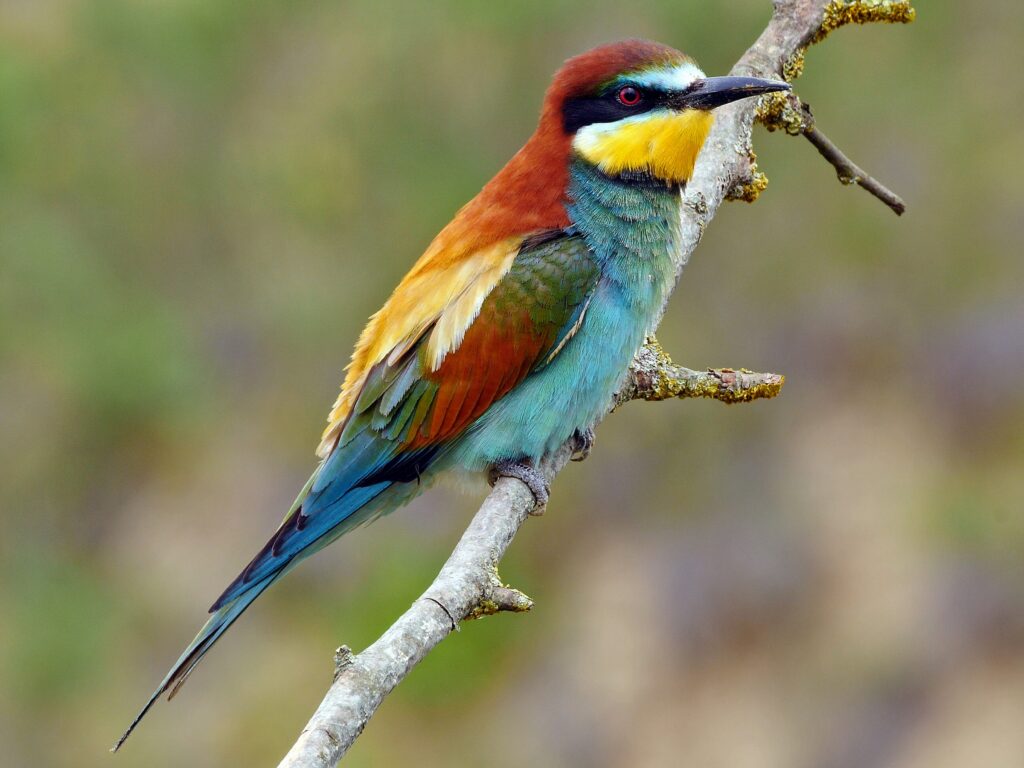
Identification and Characteristics
European bee-eaters (Merops apiaster) are among the most colorful birds in Europe with distinctive features that make them easily recognizable. Their vibrant plumage and unique body shape help birdwatchers identify them quickly in their natural habitats.
Physical Description
The European bee-eater displays remarkable coloration with a chestnut crown and upper back, contrasting against yellow throat and blue underparts.
These medium-sized birds typically measure 25-29 cm (10-11 inches) in length, including their extended central tail feathers.
Their weight ranges from 45-80 grams, making them lightweight despite their colorful presence.
Bee-eaters possess long, slightly curved black bills perfectly adapted for catching flying insects, especially bees and wasps.
Their wings are pointed and they have a streamlined body shape ideal for aerial hunting.
Males and females look similar, though males generally have slightly brighter colors. Young birds appear duller with greener backs and lack the extended tail streamers of adults.
Species Variations
While Merops apiaster maintains consistent identification markers throughout its range, subtle variations exist between populations. Birds from eastern regions often display slightly brighter plumage than their western counterparts.
First-year birds lack the elongated central tail feathers and show a paler throat patch. Some individuals may present more intense blue coloration on their underparts, particularly during breeding season.
Regional variations can include:
- Southern European populations: Often brighter overall coloration
- Northern African populations: Slightly smaller with more intense yellow throat markings
- Eastern European specimens: Typically larger with deeper chestnut upper parts
European bee-eaters range across several continents and inhabit specific environments that support their unique lifestyle. These colorful birds select their habitats carefully based on nesting requirements and food availability.
Geographical Range
European bee-eaters (Merops apiaster) spread across Europe, Africa, and parts of Asia during different seasons. They’re summer migrants to Southern Europe, particularly around the Mediterranean basin, arriving in April and May to breed.
During winter, these birds migrate to sub-Saharan Africa, with many populations traveling as far as South Africa. This impressive journey spans thousands of kilometers twice annually.
Specific breeding populations can be found in Hungary, Crimea, and parts of North Africa. Some colonies also establish themselves in Western Asia, though numbers vary by region.
Their range has expanded northward in recent decades, with breeding pairs occasionally appearing in northern European countries where they were previously rare.
Habitat Preferences
European bee-eaters favor open landscapes with abundant insect populations and suitable nesting sites.
They typically select habitats near water bodies, particularly rivers with sandy banks where they can dig their nesting tunnels.
These birds show a strong preference for:
- Sandy riverbanks and cliffs
- Open woodland edges
- Savanna landscapes
- Agricultural areas with scattered trees
- Low-density forest clearings
Nesting colonies require vertical sand banks or soft soil where they can excavate tunnels 1-2 meters deep. These colonies may contain anywhere from a few pairs to over 100 breeding couples.
During migration, bee-eaters utilize various habitats as stopover sites, including coastal areas and mountain passes. They avoid dense forests and highly urbanized regions where hunting opportunities are limited.
Feeding Behavior
European bee-eaters are skilled aerial hunters with a specialized diet of flying insects. They employ impressive hunting techniques to catch their prey mid-flight, making them efficient insectivores in their habitat.
Diet Composition
European bee-eaters primarily consume flying insects, with bees and wasps making up 70% of their diet.
Despite their name, these colorful birds don’t eat only bees. They catch a variety of insects including dragonflies, butterflies, and flying ants.
Bumblebees are particularly nutritious targets for bee-eaters. They also consume beetles, cicadas, and termites when available.
A single bird can eat 250-300 bees daily during peak feeding seasons.
Bee-eaters are selective hunters. They avoid honeybees carrying pollen, as these bees contain less energy compared to those returning with nectar.
This selective behavior demonstrates their efficiency as insectivores.
The birds’ diet varies by season and location, adapting to the most abundant flying insects in their environment.
Hunting Techniques
European bee-eaters employ fascinating techniques to capture and prepare their prey.
They hunt from perches, scanning for insects before launching into flight to catch them mid-air.
When a bee-eater spots potential prey, it swoops with remarkable precision. The bird catches insects with its long, curved bill, then returns to its perch for processing.
Before eating bees or wasps, bee-eaters remove the stinger by rubbing the insect against a branch.
This clever technique prevents injury from the venom. They strike the insect against their perch 7-10 times until the venom sac ruptures.
Bee-eaters often hunt in groups, increasing their success rate. They coordinate their efforts by calling to each other during hunts.
The birds typically hunt within 1-2 miles of their nesting sites. Their exceptional eyesight allows them to spot insects from distances of up to 100 meters.
Reproduction and Lifecycle
European bee-eaters have fascinating breeding behaviors that follow a seasonal pattern. Their reproduction involves elaborate courtship displays, specific timing, and distinctive nesting strategies.
Mating Rituals
European bee-eaters perform impressive courtship displays to attract mates. Males capture large insects, particularly bees, which they present to females as gifts.
This food-offering behavior demonstrates the male’s hunting skills and fitness as a potential partner.
Males also engage in aerial displays, performing swooping flights and distinctive calls to attract females.
These colorful birds often form monogamous pairs that may last for multiple breeding seasons.
The courtship includes specific perching positions where males sit closely beside females, sometimes gently touching wings.
Males may feed females up to 15 times per day during this period, cementing their bond before nesting begins.
Breeding Season
European bee-eaters typically breed from May to July, though timing varies by location. Birds in southern regions may start earlier, while northern populations begin later.
These birds are colonial nesters, forming groups of 10-100 pairs. Colony size depends on habitat quality and availability of suitable nesting sites.
Weather conditions significantly influence breeding success. Rainy periods can reduce insect availability, affecting both adult survival and chick development. During optimal conditions, bee-eaters can successfully raise 4-5 chicks.
Breeding colonies often return to the same location year after year if the site remains undisturbed. This site fidelity helps establish successful breeding grounds where conditions are proven suitable.
Nesting Habits
European bee-eaters nest in self-excavated burrows in sandy banks, cliffs, or flat ground. Both males and females participate in digging, using their bills and feet to create tunnels 1-2 meters deep.
Each tunnel ends in a nesting chamber where females lay 4-7 glossy white eggs.
The pair takes turns incubating the eggs for approximately 20 days until hatching.
Bee-eaters often receive help from non-breeding “helpers,” usually offspring from previous years.
These helpers assist with incubation, feeding chicks, and defending the nest from predators.
The burrow design provides excellent protection against most predators and temperature fluctuations.
Chicks remain in the nest for about 30 days before fledging, though they continue to receive food from parents for several more weeks.
Conservation Status
The European Bee-eater currently maintains a “Least Concern” classification on the IUCN Red List, though it faces several challenges that conservationists monitor closely.
Current Threats
Habitat loss represents one of the biggest threats to European Bee-eaters. As natural riverbanks and sandy slopes are developed for human use, these birds lose critical nesting sites.
Pesticide use in agricultural areas poses another significant problem. These chemicals reduce insect populations that Bee-eaters depend on for food, particularly bees and other flying insects.
Climate change is altering the timing of migrations and insect availability. This can create mismatches between when Bee-eaters arrive at breeding grounds and when their food is most abundant.
Illegal hunting continues in some Mediterranean countries, especially during migration periods when the birds travel in large, visible flocks.
In some regions, beekeepers have historically viewed these birds as pests due to their diet of honeybees, though education efforts have improved this relationship.
Conservation Efforts
Protected area designation has helped safeguard key breeding and stopover sites across Europe, the Middle East, and Africa. These protected zones limit development and disturbance during critical breeding periods.
Conservation organizations actively monitor population trends through bird counts and migration studies. This data helps identify problem areas before populations decline significantly.
Artificial nesting banks have been constructed in some regions where natural sites have been lost. These structures provide safe breeding locations and have been readily accepted by the birds.
Public education campaigns highlight the ecological importance of Bee-eaters and their role in controlling insect populations. These programs have improved local attitudes toward the species.
Cross-border cooperation has strengthened as countries recognize that protecting migratory species requires international efforts throughout their range.
Interaction with Humans
European bee-eaters have a complex relationship with humans that spans both agricultural impact and cultural significance. These colorful birds attract wildlife enthusiasts while sometimes creating challenges for beekeepers.
Bee-Eaters and Beekeeping
European bee-eaters can impact beekeeping operations by consuming honey bees. A single bird may catch up to 250 bees per day, potentially affecting hive productivity in areas with large bee-eater populations.
Beekeepers sometimes use deterrent methods like reflective tape or netting to protect their hives. These protective measures help minimize losses while allowing bee-eaters to fulfill their ecological role elsewhere.
In some regions, bee-eaters actually benefit agriculture by controlling harmful insect populations. They consume wasps, hornets, and other agricultural pests that might otherwise damage crops on plantations.
Professional conservationists often work with beekeepers to find balanced solutions that protect both the birds and honey production.
Cultural Significance
European bee-eaters have captivated human attention for centuries with their vibrant plumage and aerial acrobatics. Their striking colors make them favorites among bird photographers and wildlife enthusiasts.
The birdwatching community particularly values bee-eaters for their predictable migration patterns and distinctive behavior. Dedicated tours in southern Europe and Africa often highlight these birds as main attractions.
In various European cultures, bee-eaters appear in folk art, literature, and local traditions. Their annual return to nesting sites sometimes marks seasonal changes in traditional calendars.
Conservation efforts have increased as people recognize the bee-eater’s value as both a natural pest controller and a beautiful component of biodiversity. Protected nesting sites now exist in many countries across their range.
Observation Tips
Finding and observing European bee-eaters requires patience and the right techniques. These colorful birds have specific habits and habitats that make spotting them a rewarding challenge for birdwatchers.
Best Locations for Spotting
European bee-eaters prefer open habitats like savannahs, shrublands, and grasslands with scattered trees for perching.
They are most commonly found in southern Europe, northern Africa, and parts of western Asia during breeding season (April to September).
River valleys and sandy banks are prime locations, as these birds dig nesting tunnels in sandy soil. The birds are highly social, so listen for their distinctive “prrrp” calls that often reveal their presence before you see them.
Early morning is the optimal time for observation when bee-eaters are most active hunting insects. Lookout for them perched on exposed branches, telegraph wires, or fences.
Many nature reserves across Europe have established viewing hides specifically for observing bee-eater colonies. The Danube Delta, southern Spain, and Portugal’s Algarve region host significant populations during summer months.
Photography Advice
Photographing European bee-eaters presents unique challenges due to their quick movements and often distant perches. A telephoto lens (at least 300mm) is essential for capturing these birds in detail.
Using a tripod helps maintain stability for sharp images. This is especially important in low light conditions during early morning or late afternoon. These golden hours also provide warm lighting that enhances the birds’ vibrant plumage.
Set your camera to a fast shutter speed (at least 1/1000 second) to freeze action when the birds dive for insects or engage in aerial acrobatics. Continuous shooting mode increases your chances of capturing perfect moments.
Be patient and observe the birds’ behavior patterns. They often return to favorite perches after hunting flights, giving photographers time to prepare for their return.
Respect the birds’ space and avoid approaching nesting colonies too closely. The birdwatching community emphasizes ethical photography that prioritizes animal welfare over striking images.
